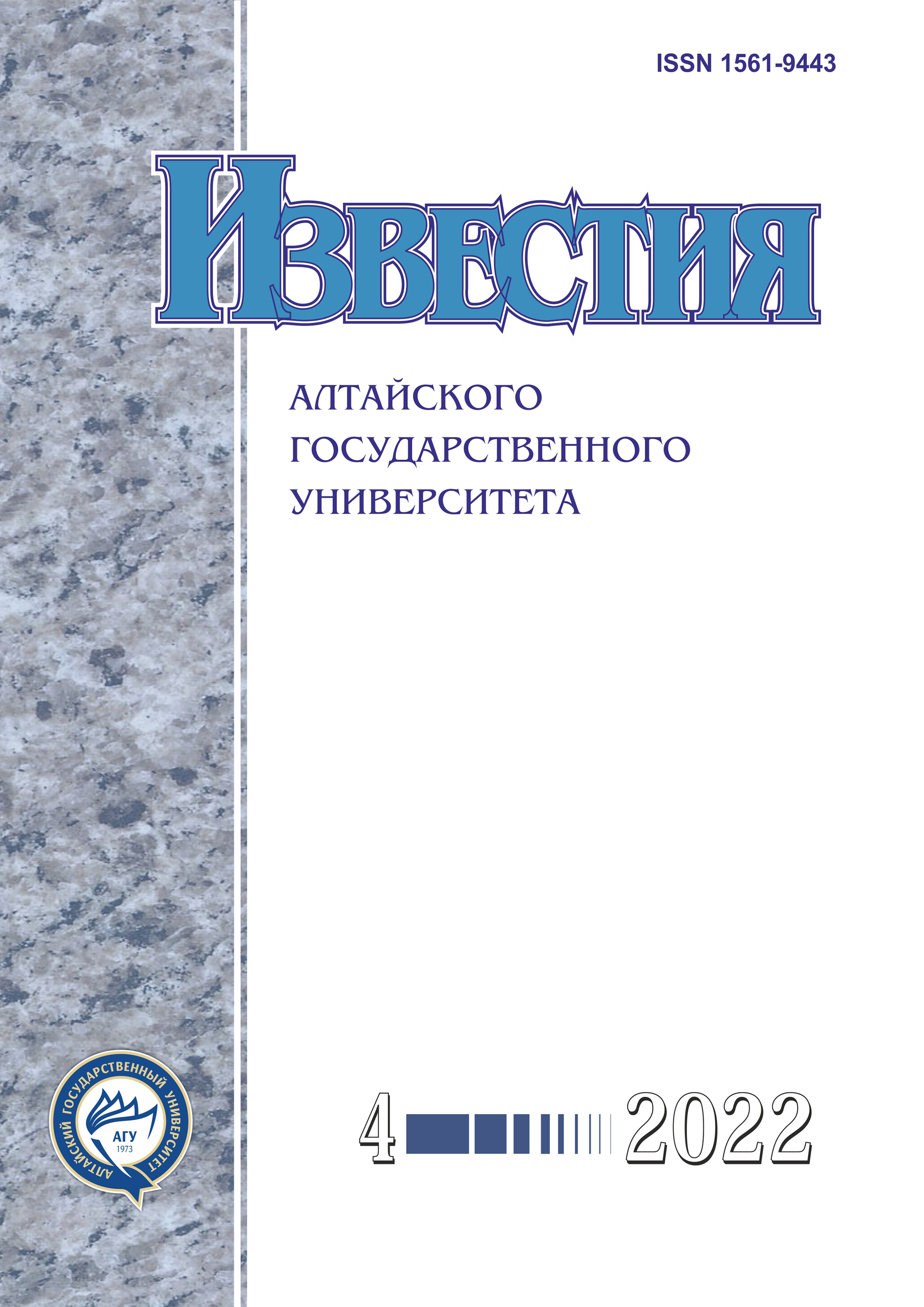Computer Simulation of Electron Transfer between the Cytochrome Active Center and Reactive Oxygen and Nitrogen Species
УДК 539.12:004.94
Abstract
In this work, computer simulation at the level of density functional theory is carried out using the PBE functional and bases of the def2- group. The characteristics of the electron transfer reaction according to the Marcus theory from the bioradicals O2-, NO, and NO- to the active center of cytochrome c are calculated. The values of the activation energy ΔG≠, the overlapping matrix element of the donor and acceptor HDA molecular orbitals, the frequency transfer factor ket , and the second-order transfer rate constant k are obtained. The numerical values of k for three radicals make it possible to draw a conclusion about the efficiency of their neutralization by interaction with the active center of the enzyme. For instance, for superoxide ion O2- k=6.32·105 М-1-с-1 at a distance of 5.02 Å, for nitrogen monoxide NO k=6.96·106 М-1-с-1 at a distance of 5.60 Å and oxoazanide ion NO- k=4.45·101 М-1-с-1 at distances of 5.60 Å and 4.45 Å. The transfer distances are obtained from the potential energy curves when the radical approaches the iron ion. The obtained values allow us to conclude that the iron ion in the heme protein environment is the most effective in deactivating the superoxide ion and nitrogen monoxide.
Downloads
Metrics
References
Barja G. Mitochondrial oxygen radical generation and leak: sites of production in states 4 and 3, organ specificity, and relation to aging and longevity // J. Bioenergetics and Biomembranes. 1999. Vol. 31.
Осипов А.Н., Борисенко Г.Г. Биологическая роль нитрозильных комплексов гемопротеинов // Успехи биологической химии. 2007. Т. 47.
Neese F. The ORCA program system // Wiley interdisciplinary Reviews — Computational Molecular Science. 2012. Vol. 2 (1).
Perdew J.P, Burke K., Ernzerhof M. Generalized Gradient Approximation Made Simple // Phys. Rev. Letters. 1996. Vol. 77.
Weigend F., Ahlrichs R. Balanced Basis Sets of Split Valence, Triple Zeta Valence and Quadruple Zeta Valence Quality for H to Rn: Design and Assessment of Accuracy // Phys. Chem. Chem. Phys. 2005. Vol. 7.
Rappoport D., Furche F. Property-optimized Gaussian basis sets for molecular response calculations // Phys. Chem. Chem. Phys. 2010. Vol. 133.
Xerri B., Petitjean H., Dupeyrat F., Flament J.-P, Lorphelin A., Vidaud C., Berthomieu C., Berthomieu D. Mid-and Far-Infrared Marker Bands of the Metal Coordination Sites of the Histidine Side Chains in the Protein Cu,Zn-Superoxide Dismutase// European Journal of Inorganic Chemistry. 2014. Vol. 27.
Weigend F. Accurate Coulomb-fitting basis sets for H to Rn // Phys. Chem. Chem. Phys. 2006. Vol. 8.
Grimme S., Antony J., Ehrlich S. & Krieg H. A consistent and accurate ab initio parametrization of density functional dispersion correction (DFT-D) for the 94 elements H-Pu. J. Chem. Phys. 2010. Vol. 132.
Caldeweyher E., Bannwarth C., Grimme S. Extension of the D3 dispersion coefficient model // Phys. Chem. Chem. Phys. 2017. Vol. 147.
Cossi M., Rega N. & Scalmani G. et al. Energies, structures and electronic properties of molecules in solution with the CPCM solvation model. Chem. Phys. 2003. Vol. 24.
Marcus R.A., Sutin N. Electron transfers in chemistry and biology. 1985. Vol. 811 (3).
Eberson L. The Marcus theory of electron transfer, a sorting device for toxic compounds // Free radical biology and medicine. 1985. Vol. 1.
Cave R.J., Newton M.D. Calculation of electronic coupling matrix elements for ground and excited state electron transfer reactions: Comparison of the generalized Mulliken-Hush and block diagonalization methods // The Journal of Chemical Physics. 1997. Vol. 22.
Lippard S.J. Theory of Electron Transfer Reactions: Insights and Hindsights // Progress in Inorganic Chemistry 1983. Vol. 30.
Copyright (c) 2022 Екатерина Александровна Попова , Андрей Валерьевич Рябых , Ольга Андреевна Маслова , Сергей Александрович Безносюк

This work is licensed under a Creative Commons Attribution 4.0 International License.
Izvestiya of Altai State University is a golden publisher, as we allow self-archiving, but most importantly we are fully transparent about your rights.
Authors may present and discuss their findings ahead of publication: at biological or scientific conferences, on preprint servers, in public databases, and in blogs, wikis, tweets, and other informal communication channels.
Izvestiya of Altai State University allows authors to deposit manuscripts (currently under review or those for intended submission to Izvestiya of Altai State University) in non-commercial, pre-print servers such as ArXiv.
Authors who publish with this journal agree to the following terms:
- Authors retain copyright and grant the journal right of first publication with the work simultaneously licensed under a Creative Commons Attribution License (CC BY 4.0) that allows others to share the work with an acknowledgement of the work's authorship and initial publication in this journal.
- Authors are able to enter into separate, additional contractual arrangements for the non-exclusive distribution of the journal's published version of the work (e.g., post it to an institutional repository or publish it in a book), with an acknowledgement of its initial publication in this journal.
- Authors are permitted and encouraged to post their work online (e.g., in institutional repositories or on their website) prior to and during the submission process, as it can lead to productive exchanges, as well as earlier and greater citation of published work (See The Effect of Open Access).








